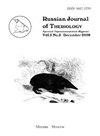Use of habitat and foraging time by females of Eptesicus nilssonii (Chiroptera, Vespertilionidae)
IF 0.6
4区 生物学
Q4 ZOOLOGY
引用次数: 4
Abstract
Characteristic features of summer habitat and foraging time used by female E. nilssonii of differing reproductive status have been investigated. The research was carried out in the north of Samarskaya Luka in May and July 2012–2018. Sixteen bats were captured and tagged with transmitters. Research revealed that tree hollows serve as main roosts for bats. Regular roost switching is characteristic for pregnant and post-lactating female colonies, while lactating females utilize the same roost for nearly the entire lactation period. Evening emergence of bats is highly light dependent and occurs 40 minutes after sunset on average. Female home range size is similar in spring and summer, and averages 430.7 and 401.8 ha, respectively. Regardless of the season, their main foraging sites are forest edges, clearings, and spaces along the vertical tree and shrubbery vegetation structure of the riverbank area. Pregnant and post-lactating females not caring for offspring exhibit similar duration of nocturnal activity. Lactating females forage less and in phases. In late spring, females often hunt in places located over 3 km away from daytime roosts, while in summer they usually forage within 1 km of the roost. The revealed differences in behavior of pregnant, lactating, and post-lactating females are discussed in relation to insect resources and the energy costs of foraging and feeding non-flying offsprings. How to cite this article: Smirnov D.G., Bezrukov V.A., Kurmaeva N.M. 2021. Use of habitat and foraging time by females of Eptesicus nilssonii (Chiroptera, Vespertilionidae) // Russian J. Theriol. Vol.20. No.1. P.1–10. doi: 10.15298/rusjtheriol.20.1.01.尼罗Eptesicus nilsonii(翼手目,Vespertilionidae)雌性对栖息地和觅食时间的利用
研究了不同生殖状态的雌尼罗氏夜蛾的夏季生境特征和觅食时间。该研究于2012年5月和2018年7月在萨马拉斯卡亚卢卡北部进行。他们捕获了16只蝙蝠,并给它们贴上了发射器。研究表明树洞是蝙蝠的主要栖息地。定期更换栖息地是怀孕和哺乳期后的雌性群体的特征,而哺乳期的雌性几乎在整个哺乳期都使用同一个栖息地。蝙蝠的夜间出现高度依赖于光线,平均发生在日落后40分钟。雌性的家庭面积在春季和夏季相似,平均分别为430.7公顷和401.8公顷。无论季节如何,它们的主要觅食地点是森林边缘、空地和沿河岸地区垂直树木和灌木植被结构的空间。怀孕和哺乳期后不照顾后代的雌性表现出相似的夜间活动时间。哺乳期雌性觅食较少,而且是分阶段的。在晚春,雌性通常在距离白天栖息地3公里的地方觅食,而在夏天,它们通常在距离栖息地1公里的地方觅食。本文讨论了妊娠期、哺乳期和哺乳期后雌性昆虫的行为差异与昆虫资源以及觅食和喂养非飞行后代的能量消耗的关系。本文引用方式:Smirnov d.g., Bezrukov v.a., Kurmaeva N.M. 2021。nilsoniicus(翼翅目,夜蛾科)雌蚊对生境和觅食时间的利用//俄罗斯J. Theriol。第2期。第一。P.1-10。doi: 10.15298 / rusjtheriol.20.1.01。
本文章由计算机程序翻译,如有差异,请以英文原文为准。
求助全文
约1分钟内获得全文
求助全文
来源期刊

Russian Journal of Theriology
Agricultural and Biological Sciences-Animal Science and Zoology
CiteScore
0.90
自引率
33.30%
发文量
0
期刊介绍:
The Russian Journal of Theriology publishes papers on all aspects of mammalian biology: taxonomy, zoogeography, ecology, behavior, morphology, development, physiology, paleontology, and evolution. Studies of extinct as well as extant taxa are included. Reviews are also published; these may be invited by the Editorial Board.
 求助内容:
求助内容: 应助结果提醒方式:
应助结果提醒方式:


